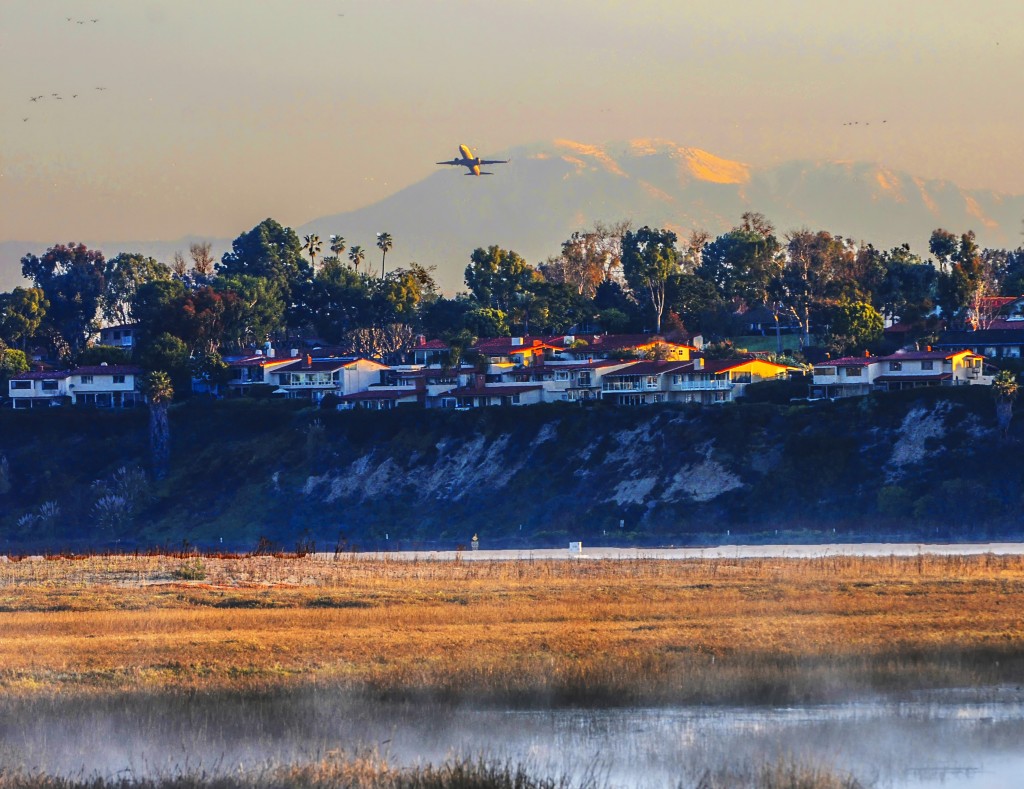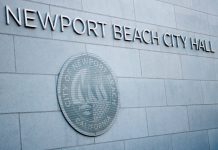
— Photo by Lawrence Sherwin
John Wayne Airport’s departure flight procedure could change to a more curved path over Upper Newport Bay to reduce noise levels, according to discussions between the Federal Aviation Administration and the city of Newport Beach.
The most recent development was a response from the FAA in June after Mayor Keith Curry sent the agency a letter in April proposing the development of a Required Navigation Performance departure procedure at JWA.
On behalf of the city, Curry sent the letter proposing the development of a Required Navigation Performance departure procedure at John Wayne Airport. Curry wrote that the city felt the FAA’s proposed NextGen program presented an opportunity to “improve upon the long-standing issues related to noise mitigation at John Wayne Airport.”
David Suomi, acting deputy regional administrator of the FAA’s Northwest Region, wrote in the response letter that they carefully reviewed the request.
“We appreciate the potential benefits of the proposed RNP departure in mitigating noise,” Suomi wrote.
There are many challenges though, he continued.
“These challenges include, but are not limited to, the following: the proposed procedure does not meet current criteria for departure procedure design, the standards for charting do not yet exist, and the process for authorizing the use of an RNP departure is still evolving,” Suomi explained in the letter. “These challenges need to be resolved before we can consider procedure development and implementation.”
The FAA will start testing an RNP departure procedure at Hartsfield-Jackson Atlanta International Airport in October, said Ian Gregor, public affairs manager for the FAA’s Pacific Division.
“We have implemented hundreds of RNP arrival procedures nationwide but we have not implemented any RNP departure procedures,” Gregor explained in an email. “We’re planning to start testing an RNP departure procedure in Atlanta this fall to see how it will work.”
The procedure will be available at the pilot’s request for certain Delta Air Lines departures at the Atlanta airport. The optional curved path will take aircraft over a nearby golf course, just west of the airport.
“We expect to publish the procedure in October 2013 and it will be available for a 90 to 120 day test,” Gregor said.
According to the city’s Aviation Committee’s latest newsletter, an FAA spokesman said that “Atlanta was chosen for the prototype because its air traffic controllers have extensive experience working on other advanced satellite-guided take-off and landing procedures through the FAA’s NextGen program.”
Currently at John Wayne Airport, departing airplanes typically take-off to the south, Gregor explained, although they depart to the north when certain weather conditions exist, primarily strong Santa Ana winds.
“We have not yet started work on an RNP departure procedure for SNA so I couldn’t comment on what it might look like or the effects it might have,“ Gregor noted. “Generally speaking, RNP arrival procedures can reduce noise because aircraft fly them on reduced power. Aircraft flying an RNP departure procedure would still have to have their engines on high power to maintain their climb rate.”
The Aviation Committee also noted in the newsletter that the city will follow up with the Federal Aviation Administration and will have more to report in the coming months.
The FAA may look at Newport’s request again in mid to late 2014.
“It takes considerable time to develop, test and publish new procedures,” Gregor added.
Curry said there has been no other recent update, other than the letter from the FAA in June.
It is unclear whether or not the city will pursue the issue next year.
“No decision has been made on this, it’s an ongoing process, but not one we control,” Curry said. “I would not expect anything until 2014.”
According to the John Wayne Airport website, “The ideal flight path for commercial aircraft and private jets is to follow the Newport Bay out to the ocean.”
Every year, the airport records, researches and responds to more than 2,000 noise complaints, according to JWA.
The Access and Noise Office at John Wayne has 10 monitoring stations that track more than 200,000 air carrier and general aviation operations that occur each year at JWA. The stations enable JWA staff to analyze the data and determine if an aircraft has violated the noise limits, the airport website explains.




